When I was younger, my dream was to open a cheese store with my family. My mom, brother, sister, and I — we’re all obsessed with cheese.
So anytime I see a cheese store, I’ll go in and sample everything … for research, obviously.
Although I’d never thought about it this way before, I was already thinking in terms of market intelligence and market research (two different concepts, but more on that below).
I was thinking about the product and its competitors.
As a marketer, market intelligence is important because it can help you understand your position in the market, evaluate your product, know your target audience, and conduct competitive analysis.
With this information, your marketing team will be better equipped to position your company in the marketplace. For companies that prioritize intelligence data, decision-making can be five times faster.
Feeling hesitant to rely on intelligence data? Gartner reports over one-third of organizations will rely on decision intelligence by 2023, making data intelligence a must for remaining competitive.
Below, let’s review what market intelligence is, how it’s different from market research, and the intel tools that can facilitate the process.
Market intelligence is used to learn about the existing market, customers, problems, competition, and growth potential. Businesses can gather this information through internal and external sources such as sales logs, surveys, social media, news websites, manufacturers, clients, or distributors.
For instance, companies can gather general demographics and spending habits of their consumers to write better, more targeted social media ads. Additionally, market intelligence can help a company make decisions on product development and establish a stronger brand.
How to Gather Market Intelligence
So, what type of information should you collect? Generally, market intelligence can be divided into four main categories of information:
Competitor Intelligence
This is the process of learning more about your competitors. To do this, you might conduct a SWOT analysis, so you can look at the competition’s strengths and weaknesses. The goal is to uncover why customers would choose competitors over your product or service.
Product Intelligence
Once you’ve analyzed how you compare to your competitors, look inward at your own product or service. The goal is to learn about its quality and performance and identify opportunities for improvement.
If you have a physical product, you should also analyze your manufacturing process. Are you building your product in the most efficient way? This information should help you improve the user experience and improve your product.
Market Understanding
To truly understand how your product is performing, you’ll have to look at the various markets where it’s available. Could you expand your product to other markets? Are there other markets that could benefit from your product or service?
Ultimately, this information should help you understand where your audience is and what gaps exist, so you can fill them.
Customer Understanding
Understanding your customer helps to increase your product or service life cycle. That’s because it’s usually more expensive to gain a new customer than to keep an existing one.
For this reason — and many others — you have to know your audience. Why do your customers buy from you? What challenges do you help them resolve? The goal here is to gather the information that can help your marketing team come up with targeted campaigns.
Overall, gathering market intelligence should answer questions like:
- Where should we devote more resources?
- What markets can we enter next?
- What are our customers purchasing patterns?
- What audiences should we market to?
Now, you might be wondering, “How do I gather this information?”
To conduct market intelligence, you’ll use internal and external sources of data, such as:
- Surveys
- Polls
- Forms
- Focus groups
- Interviews
- Observation
- A/B tests
- Competitor tracking analytics
Depending on the analytics you have available, a lot of this information can be found on your content management system (CMS) or customer relationship management (CRM).
However, before we jump into the software you can use to find this information, I know you’re probably thinking, “How is this different from market research?” Let’s dive into that below.
Alternatively to market intelligence, market research focuses on learning more about the buyer’s research process and what influences their buying decisions.
Example of Market Intelligence
Let’s walk through an example of how a fictional company could use market intelligence to create a competitive advantage.
JKL Podcasting Co offers online software podcasters can use to record, edit, and distribute their podcast to major streaming platforms. As marketers at JKL look to expand the company’s user base, they performed an in-depth analysis of the market for podcast recording software.
In this analysis, they covered four areas:
- Competitor landscape — They identified the top-ranking podcast recording software companies to understand their product features, pricing model, sales funnel, marketing tactics, and customer demographics.
- Product — After gathering competitor information, they worked with their product team to gain a deep understanding of their own product including key features, how it was like competitor products, and what differentiated it from competitor products. They also learned about up-and-coming features launching later in the year.
- Market analysis — Next, the team did research to understand the overall valuation and growth potential of the podcast recording software market. They learned podcast listenership has grown over the past decade and is expected to grow more in coming years, which could lead to more podcasts being produced. With seeing growth and investment in the podcasting space, along with increased interest in people wanting to start podcasts, marketers at JKL learn there is a potential market for new, or up-and-coming podcasters who want easy-to-use software.
- Customer base — Finally, the JKL marketing team reached out to a focus group of their current customers to understand their relationship to the product. The customers walk them through their podcast production workflow using JKL software and share what features they love, along with what new features or changes they would like to see.
After going through this exercise, JKL has gained valuable insight into their competitive landscape, product features to highlight, market growth opportunities, and ways to keep their current customer base engaged and using the platform.
You’re probably wondering, “How do I gather this information?” Below, let’s review what tools and software you can use.
Market Intelligence Tools
For market intelligence to be useful, companies need to conduct research and sort through their collected data for analysis. A lot of this can be done through your CRM software.
To start, many CRMs allow you to create competitor profiles in which you will track your competitors’ products, price points, organizational updates, social media activity, and more.
You’ll likely also find battle card templates in your CRM, making it easy for your sales reps to access the information they need during their calls to combat objections and persuade prospects.
In addition, you can conduct regular win/loss analysis with your sales team to determine strengths and weaknesses in your sales and/or marketing strategy. You’ll want to know:
- What factors are contributing to your wins and losses?
- What other company was the prospect considering for the sale? Why?
- Which competitors are you beating and which ones you are losing to?
If you don’t already have a CRM, there are many out there that cater to businesses ranging from small to enterprise-level. Pricing is usually structured on a monthly basis and can range anywhere from $20/month to $1200+.
If your team would rather focus on specific tools, there are several online options to help you achieve your goals. Below are a few we recommend, divided into sections depending on your goals. Additionally, if you’re a HubSpot user, many of these tools integrate with HubSpot.
Competitor Intelligence
1. HubSpot’s Marketing Hub
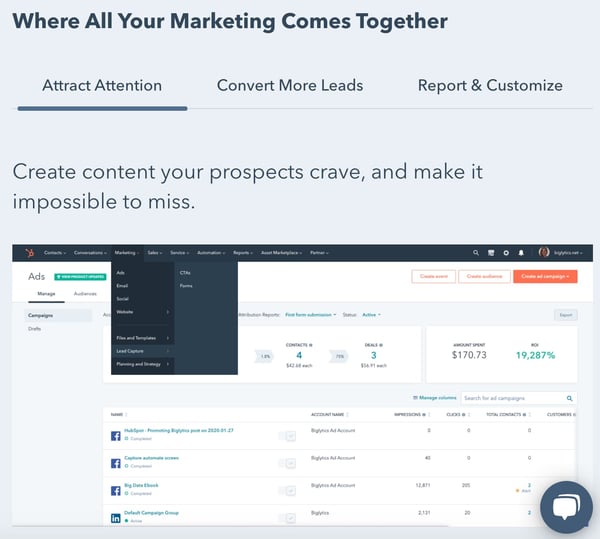
Image Source
HubSpot’s Marketing Hub has extensive tools to help marketing teams manage, track and scale their efforts. The platform offers both free and premium subscription plans ranging from $45 to $3,200 a month.
2. Crayon
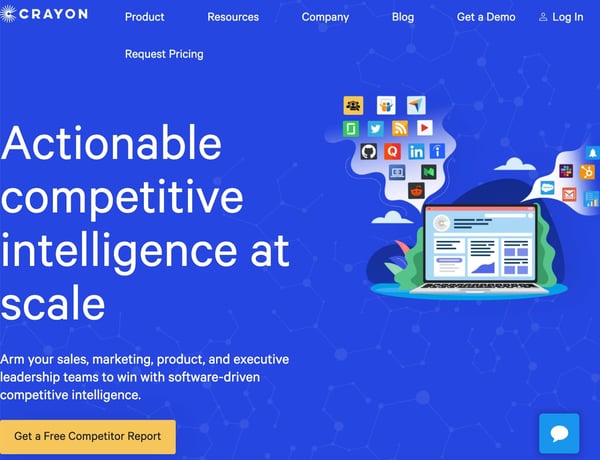
Image Source
Crayon is one of the leading competitive intelligence (CI) tools in the industry. Its software can fetch and categorize data from over 300 million sources.
The platform also makes it easy for sales and marketing teams to find the intel they need, through battle cards, email digests, and a centralized dashboard.
For pricing information, you must contact the company.
3. SEMrush
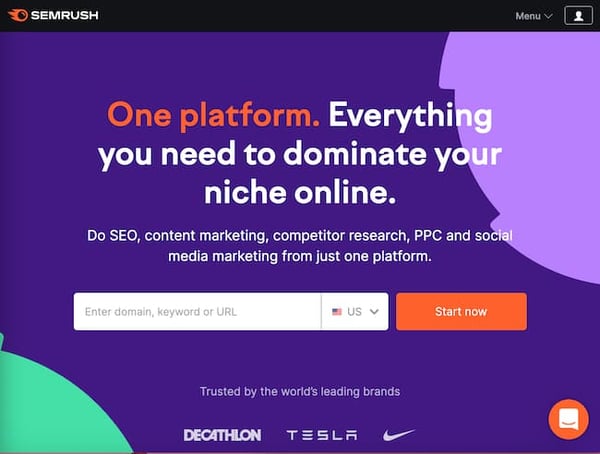
Image Source
If you want to track your competitors’ SEO performance, SEMrush is a great place to start. The platform has extensive tools, including keyword research, domain overview, and keyword difficulty. This will give you more insight into your competitors’ strategies and how their efforts are performing.
Similar to HubSpot, SEMrush offers a free version of its platform. It also offers premium subscription plans ranging from $119 to $449 a month.
Product Intelligence
1. SurveyMonkey
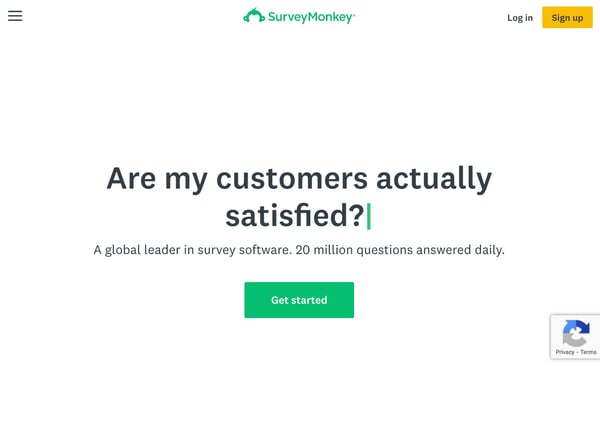
Image Source
Surveys are one of the best ways to learn more about how customers are responding to your products. Survey Monkey allows you to customize your survey to get the insights you need. Beyond a wide range of survey features like advanced survey logic and pagination, the platform also has tools to promote team collaboration.
Access to Survey Monkey starts at no cost, but their premium versions begin at $25/month.
2. InMoment
Image Source
InMoment, formerly Wootric, an analytics platform that helps you learn more about customer sentiment. You can gather real-time analytics, which arms your team to make decisions quickly.
The platform also has many integrations for easy team collaboration, including Slack, Zapier, and HubSpot.
For pricing details, you must contact the company.
3. Metadata

Image Source
Metadata is a SaaS company that helps B2B brands generate demand for their products and/or services. On the platform, you can identify audiences, conduct experiments, and track the full sales journey.
Pricing starts at $3,950 for growing companies, with custom plans available for enterprise-level businesses.
Customer Understanding
1. Google Forms
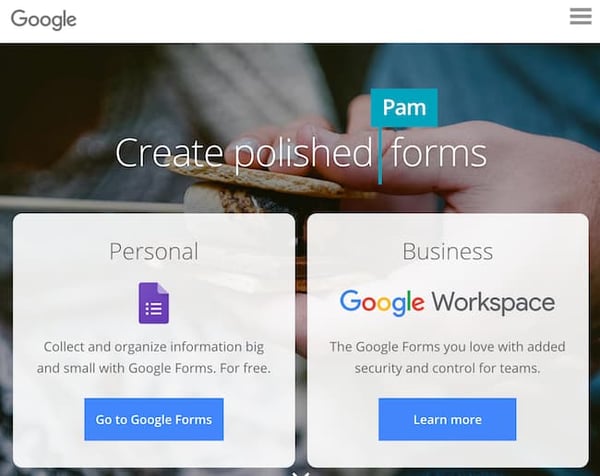 Image Source
Image Source
The stand-out feature on Google Forms is the simple and easy-to-use interface. In just a few minutes, you can have a survey ready to send out to your audience to collect data. You can receive alerts every time someone answers your survey and add collaborators.
The best part? It’s free for individuals and included in your plan if you have a Google Business account.
2. CallTrackingMetrics
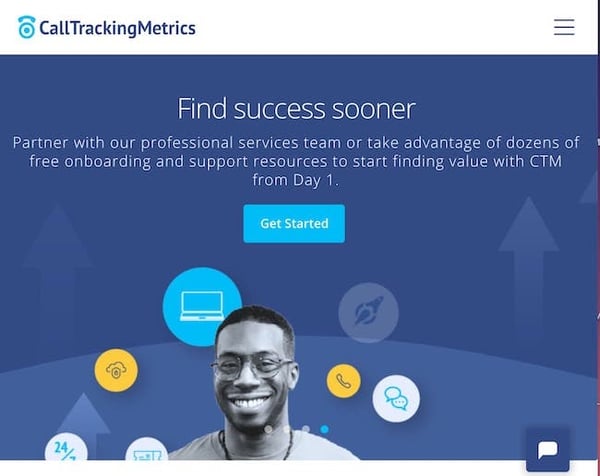
Image Source
Too often, there’s a disconnect between sales and marketing teams – CallTrackingMetrics helps solve that. The platform offers a robust analytics tool that can identify which marketing campaigns are driving conversions, automate call processes for smoother interactions, and provide analytics — all in one place.
Pricing ranges from $39/month to $299/month, with custom plans available.
3. Google Analytics

Image Source
Google Analytics is a website analytics tool with powerful reporting capabilities to understand how users are behaving on your site. It’s a great software for brands that are already using other Google products, such as Google Ads or Google Business, as they work together seamlessly.
On the platform, you can get detailed reports by goal: acquisition, retention, engagement, and monetization. The visual dashboard also allows you to get a snapshot of your site is performing.
The standard version is free and ideal for small to medium-sized companies. Entreprise-level businesses must contact sales for pricing.
How To Leverage Market Intelligence Data
Once you start collecting data, unpacking it is the next step.
But before you dive in head-first, come back to your goal. What do you want to learn and why? Use that to steer your approach.
Having a clear direction is essential during this stage to narrow down what data to focus on. You’ll be compiling a lot of data, and not all of it will be relevant to your main objective. Knowing which will be most impactful will save you so much time and allow you to use your resources efficiently.
Now that you know what to focus on, start organizing and reviewing your data. You’ll want to look for patterns. During this step, keep an open mind. Confirmation bias (the tendency to interpret information to support a pre-existing idea or belief) can greatly impact how you interpret data, so it’s important to consider all perspectives.
Once you identify a theme or trend, dive deeper to answer the 5Ws. When did it start? Who or what is influencing this? Why is it happening? Where else is this trend identified?
From there, it’s time to strategize. Based on what your data is telling you, you can develop an action plan and make recommendations to key stakeholders.
For instance, let’s say your latest intel revealed that consumers are unaware of a key feature in your product line, which is steering them toward your competitors. Your recommendation could be to launch a marketing campaign that highlights that feature, create stronger messaging on your website product pages, and adjust the sales team’s scripts to place more emphasis on this feature and how it’s better suited for your customers than a competitor’s.
The formula is easy: collect, organize, identify, and recommend. Understanding your market is key to entering the market and maintaining your place in it. But if you want to stand out among your competition, you’ll need to leverage market intel.
Market intelligence can give you a holistic view of the market, improve customer retention, boost your efficiency, and give you a competitive advantage. So, I’m not being hyperbolic when I say market intelligence is vital for your company to succeed.

![]()




